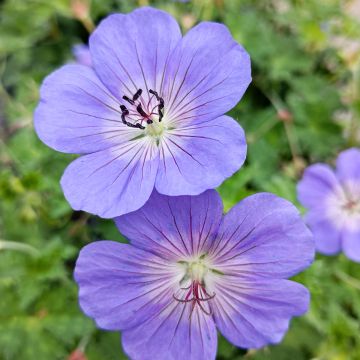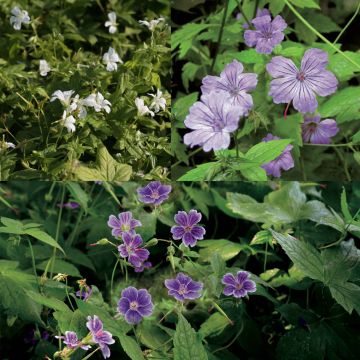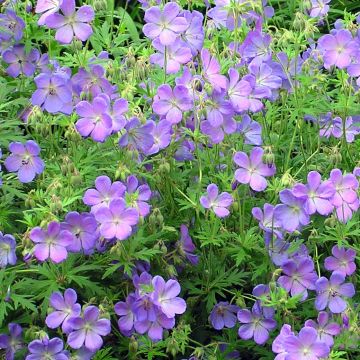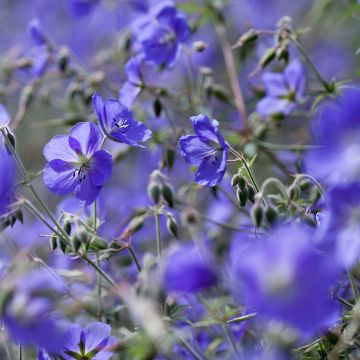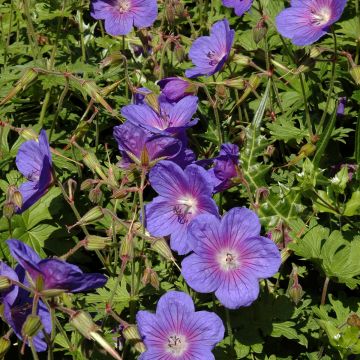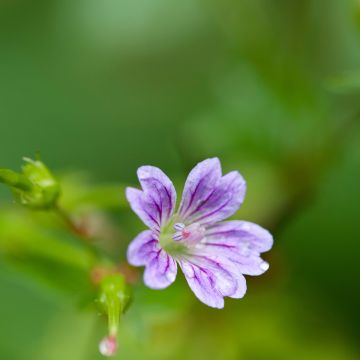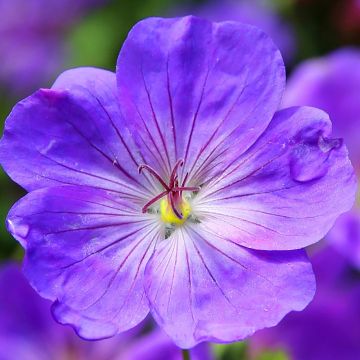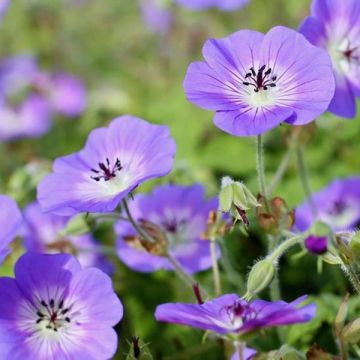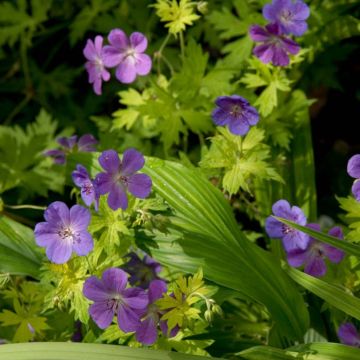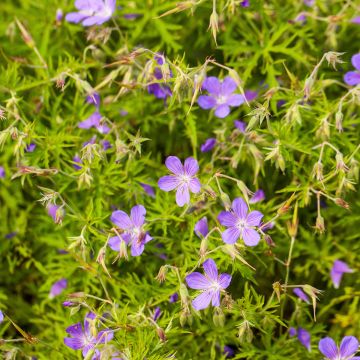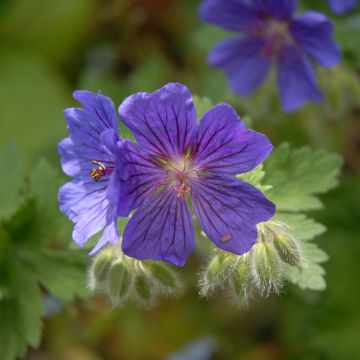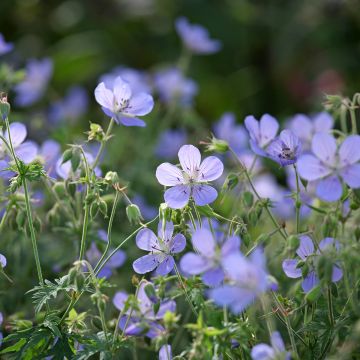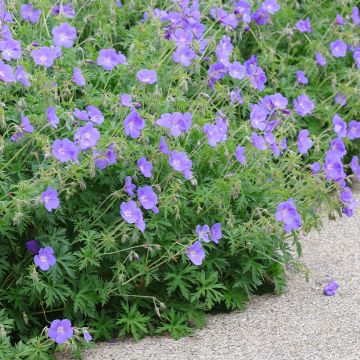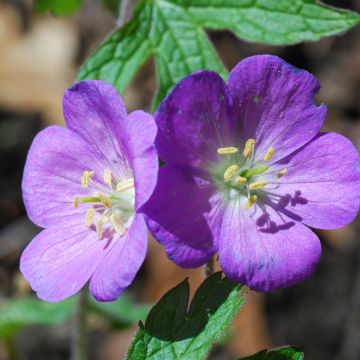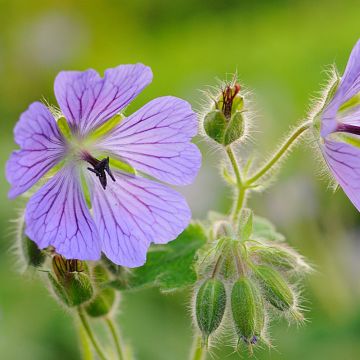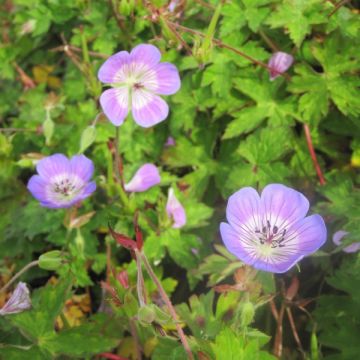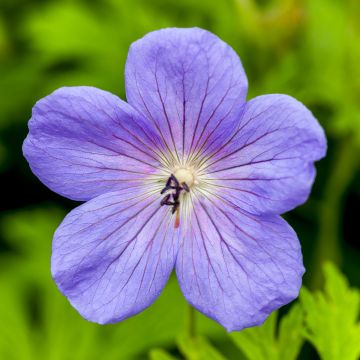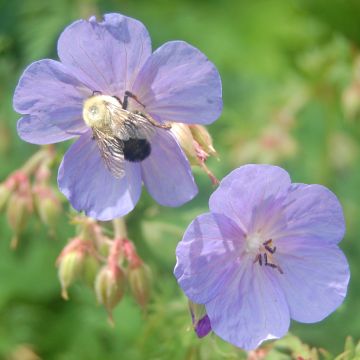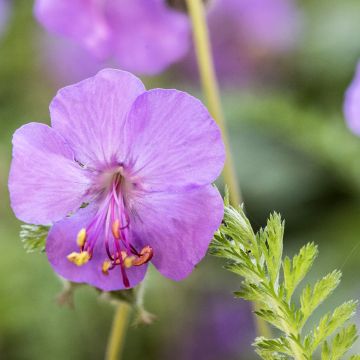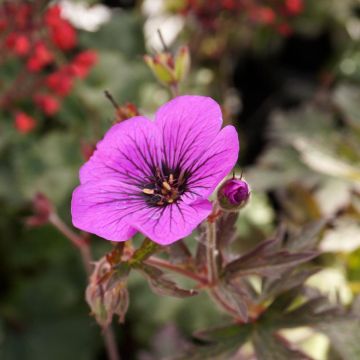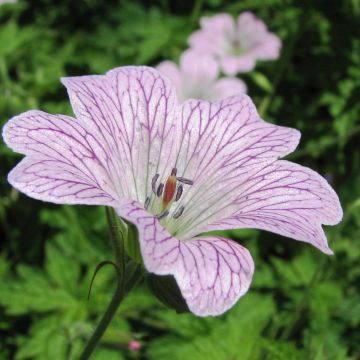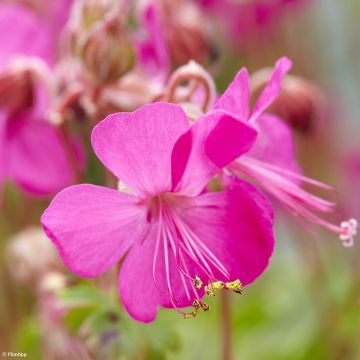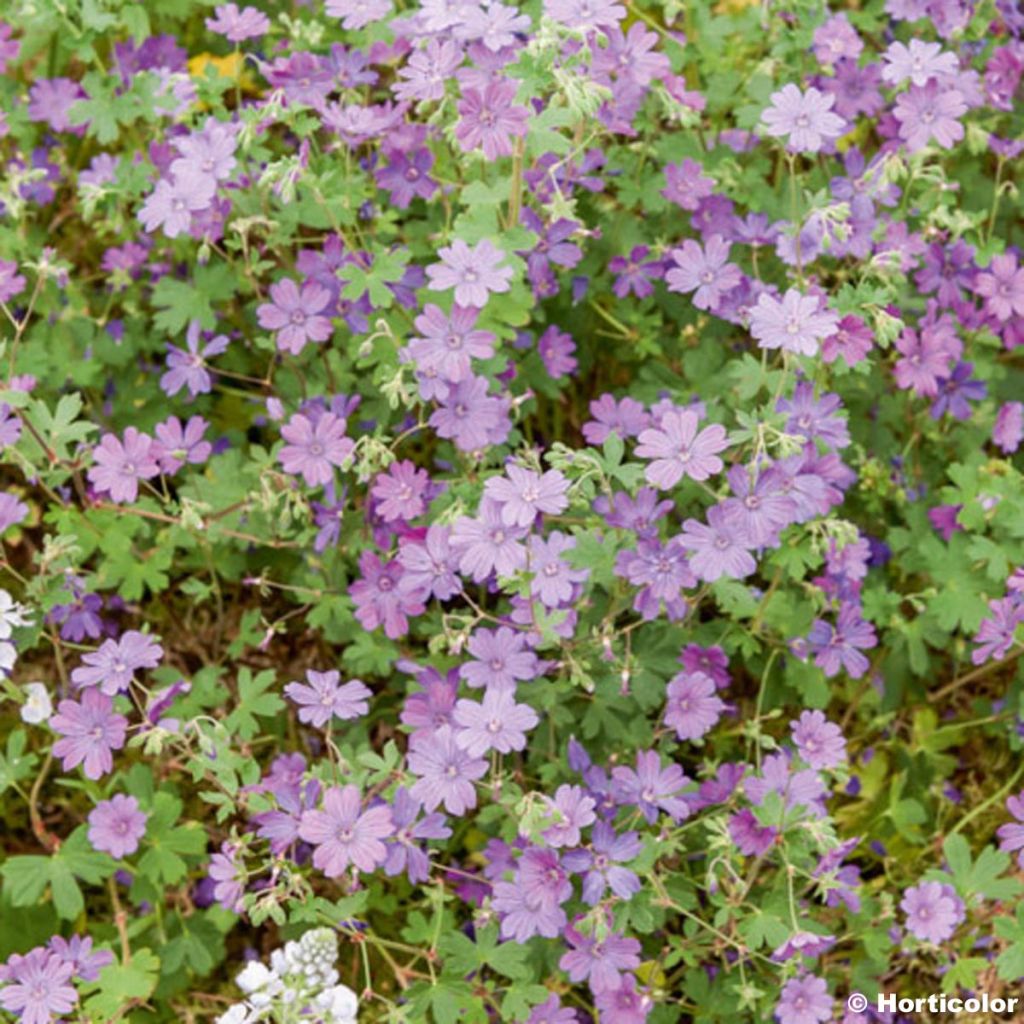

Geranium pyrenaicum Bill Wallis
Geranium pyrenaicum Bill Wallis
Geranium pyrenaicum Bill Wallis
Cranesbill, Hardy Geranium
The young plant is already taking up space.
francois, 21/06/2019
Why not try an alternative variety in stock?
View all →This plant carries a 12 months recovery warranty
More information
We guarantee the quality of our plants for a full growing cycle, and will replace at our expense any plant that fails to recover under normal climatic and planting conditions.
From €5.90 for pickup delivery and €6.90 for home delivery
Express home delivery from €8.90.

Does this plant fit my garden?
Set up your Plantfit profile →
Description
The Geranium pyrenaicum Bill Wallis is a generous, prolific and easy to grow perennial geranium, just like its tough ancestor, the Pyrenean Geranium. It forms a beautiful cushion that is covered with small blue-violet flowers throughout spring, takes a break in summer, and then blooms again from the end of August to October. It is a carefree plant, spontaneous, both light and refined, perfect for adding a touch of poetry to a natural garden where it will generously self-seed, even in less desirable areas.
The Geranium pyrenaicum, from the Geraniaceae family, is native to central and southern Europe, western Asia and North Africa. In nature, it can be found in clear undergrowth, meadows, along paths and in fields, up to 2000 meters (6562 feet) altitude. It is a plant that prefers sun and rather clay-limestone soil, poor in organic matter (humus), with a tendency to be moderately dry.
The 'Bill Wallis' cultivar, slightly more compact, was discovered by Bill Wallis in his nursery 'Useful Plant Company' in North Carolina, USA. It is a perennial plant with a relatively short lifespan, but it easily perpetuates itself through spontaneous self-seeding. At maturity, this geranium forms a large cushion about 30 cm (12in) tall and 50 cm (20in) wide. Its dark red stems, upright or spreading, emerge from the ground in spring. They bear hairy, slightly soft, generally rounded leaves, but incised into 5 to 7 lobes along the edges. The abundant and very long flowering starts in May and continues in June-July, slowing down during the peak of summer if the soil dries out a bit. Removing faded flowers promotes the appearance of a second wave of flowering, which extends from the end of August to late October. The flowers of 'Bill Wallis' are small, measuring 1.2 to 2 cm (1in) in diameter. They consist of 5 relatively thin petals, vivid blue-violet in color, arranged in a cup around a similar-toned stamen center. This flowering is followed by the formation of numerous elongated fruits (beak-shaped).
The 'Bill Wallis' geranium possesses the charm and temperament of wild plants. Undemanding and requiring little maintenance, it finds its place in a bed of wild or more sophisticated flowers, freely self-seeding in neglected areas of the garden, between the stones of a rockery, along a path, among tall grasses. Its stems eagerly weave through neighbouring plants, adorning them with bouquets of stars. For example, it can be associated with silver basket, chamomiles, aubrietas, creeping baby's breath, or Montpellier soapwort. It will be stunning with blue or white forget-me-nots, hellebores, ground cover roses (The Fairy), or even heucheras. The possibilities for associations are endless for this truly accommodating and poetic variety.
Report an error about the product description
Geranium pyrenaicum Bill Wallis in pictures
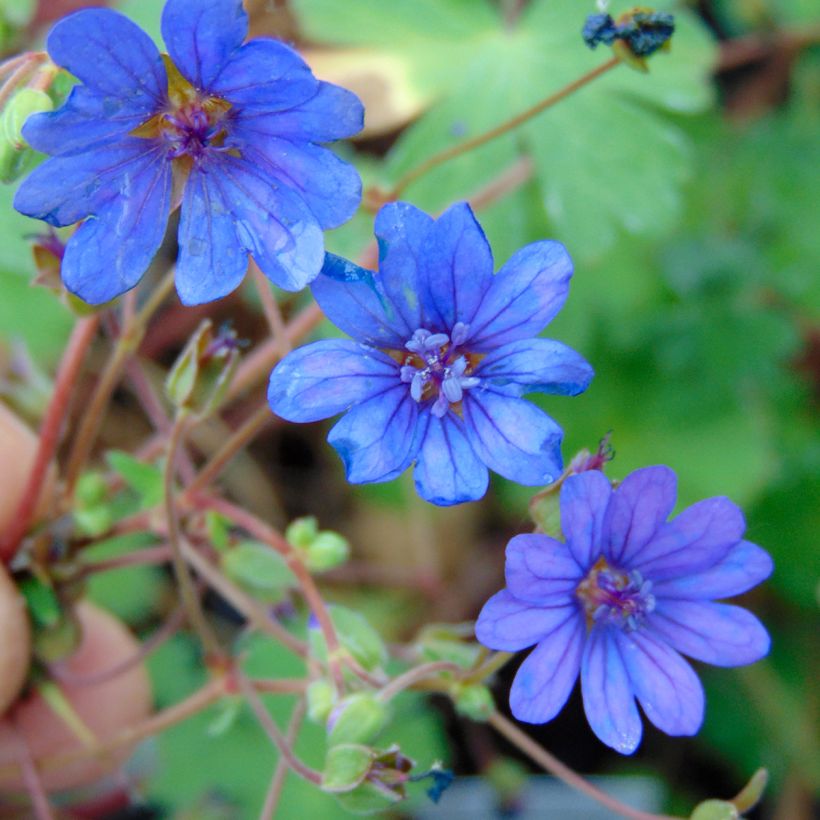

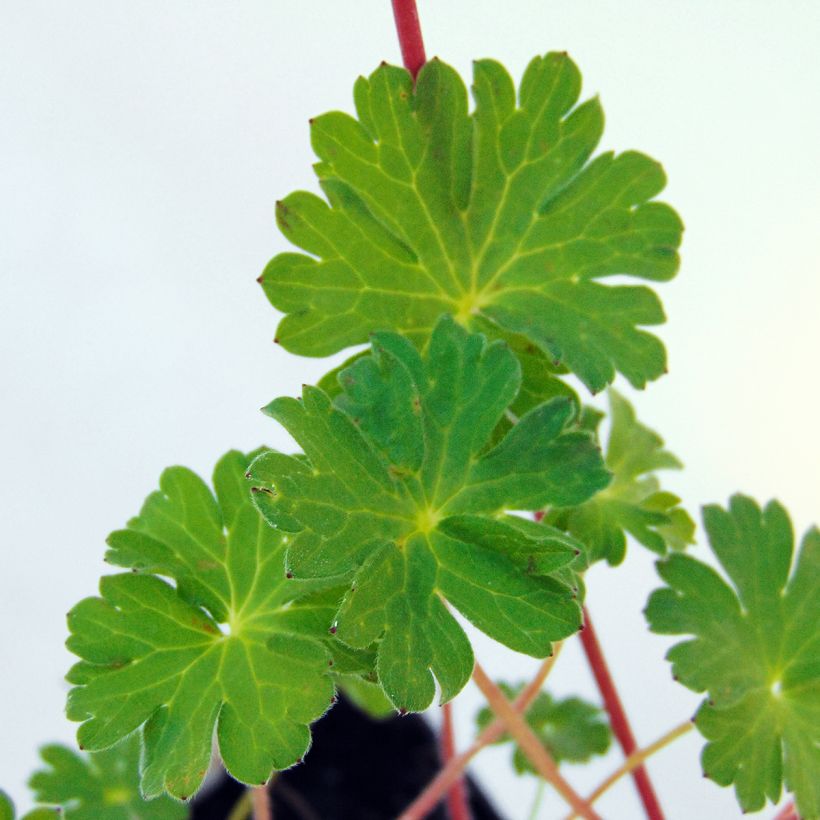

Flowering
Foliage
Plant habit
Botanical data
Geranium
pyrenaicum
Bill Wallis
Geraniaceae
Cranesbill, Hardy Geranium
Cultivar or hybrid
Other Hardy Geranium - Cranesbill
Planting and care
In nature, the Geranium pyrenaicum prefers sunny locations and well-drained clay-limestone soils. It prefers a fresh and soft, rather calcareous soil, but will tolerate a good garden soil that is not too heavy, even if it dries out in summer, once it is well established. In a very heavy soil, mix leaf compost and gravel into the garden soil. After the first wave of flowering, it is wise to prune the faded flowers to avoid excessive sowing and to promote new foliage, which will encourage a new abundant flowering in autumn.
Planting period
Intended location
Care
-
, onOrder confirmed
Reply from on Promesse de fleurs
Haven't found what you were looking for?
Hardiness is the lowest winter temperature a plant can endure without suffering serious damage or even dying. However, hardiness is affected by location (a sheltered area, such as a patio), protection (winter cover) and soil type (hardiness is improved by well-drained soil).

Photo Sharing Terms & Conditions
In order to encourage gardeners to interact and share their experiences, Promesse de fleurs offers various media enabling content to be uploaded onto its Site - in particular via the ‘Photo sharing’ module.
The User agrees to refrain from:
- Posting any content that is illegal, prejudicial, insulting, racist, inciteful to hatred, revisionist, contrary to public decency, that infringes on privacy or on the privacy rights of third parties, in particular the publicity rights of persons and goods, intellectual property rights, or the right to privacy.
- Submitting content on behalf of a third party;
- Impersonate the identity of a third party and/or publish any personal information about a third party;
In general, the User undertakes to refrain from any unethical behaviour.
All Content (in particular text, comments, files, images, photos, videos, creative works, etc.), which may be subject to property or intellectual property rights, image or other private rights, shall remain the property of the User, subject to the limited rights granted by the terms of the licence granted by Promesse de fleurs as stated below. Users are at liberty to publish or not to publish such Content on the Site, notably via the ‘Photo Sharing’ facility, and accept that this Content shall be made public and freely accessible, notably on the Internet.
Users further acknowledge, undertake to have ,and guarantee that they hold all necessary rights and permissions to publish such material on the Site, in particular with regard to the legislation in force pertaining to any privacy, property, intellectual property, image, or contractual rights, or rights of any other nature. By publishing such Content on the Site, Users acknowledge accepting full liability as publishers of the Content within the meaning of the law, and grant Promesse de fleurs, free of charge, an inclusive, worldwide licence for the said Content for the entire duration of its publication, including all reproduction, representation, up/downloading, displaying, performing, transmission, and storage rights.
Users also grant permission for their name to be linked to the Content and accept that this link may not always be made available.
By engaging in posting material, Users consent to their Content becoming automatically accessible on the Internet, in particular on other sites and/or blogs and/or web pages of the Promesse de fleurs site, including in particular social pages and the Promesse de fleurs catalogue.
Users may secure the removal of entrusted content free of charge by issuing a simple request via our contact form.
The flowering period indicated on our website applies to countries and regions located in USDA zone 8 (France, the United Kingdom, Ireland, the Netherlands, etc.)
It will vary according to where you live:
- In zones 9 to 10 (Italy, Spain, Greece, etc.), flowering will occur about 2 to 4 weeks earlier.
- In zones 6 to 7 (Germany, Poland, Slovenia, and lower mountainous regions), flowering will be delayed by 2 to 3 weeks.
- In zone 5 (Central Europe, Scandinavia), blooming will be delayed by 3 to 5 weeks.
In temperate climates, pruning of spring-flowering shrubs (forsythia, spireas, etc.) should be done just after flowering.
Pruning of summer-flowering shrubs (Indian Lilac, Perovskia, etc.) can be done in winter or spring.
In cold regions as well as with frost-sensitive plants, avoid pruning too early when severe frosts may still occur.
The planting period indicated on our website applies to countries and regions located in USDA zone 8 (France, United Kingdom, Ireland, Netherlands).
It will vary according to where you live:
- In Mediterranean zones (Marseille, Madrid, Milan, etc.), autumn and winter are the best planting periods.
- In continental zones (Strasbourg, Munich, Vienna, etc.), delay planting by 2 to 3 weeks in spring and bring it forward by 2 to 4 weeks in autumn.
- In mountainous regions (the Alps, Pyrenees, Carpathians, etc.), it is best to plant in late spring (May-June) or late summer (August-September).
The harvesting period indicated on our website applies to countries and regions in USDA zone 8 (France, England, Ireland, the Netherlands).
In colder areas (Scandinavia, Poland, Austria...) fruit and vegetable harvests are likely to be delayed by 3-4 weeks.
In warmer areas (Italy, Spain, Greece, etc.), harvesting will probably take place earlier, depending on weather conditions.
The sowing periods indicated on our website apply to countries and regions within USDA Zone 8 (France, UK, Ireland, Netherlands).
In colder areas (Scandinavia, Poland, Austria...), delay any outdoor sowing by 3-4 weeks, or sow under glass.
In warmer climes (Italy, Spain, Greece, etc.), bring outdoor sowing forward by a few weeks.

































